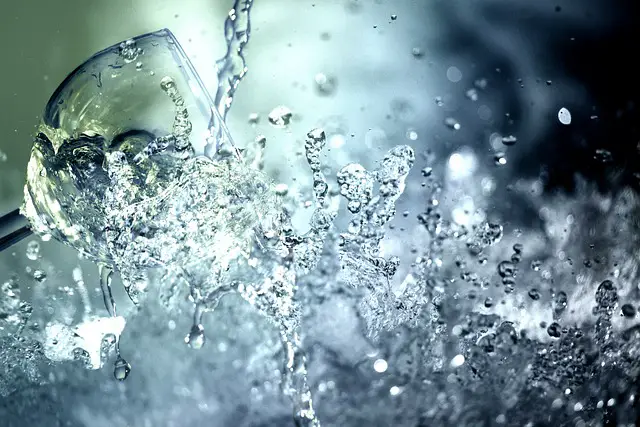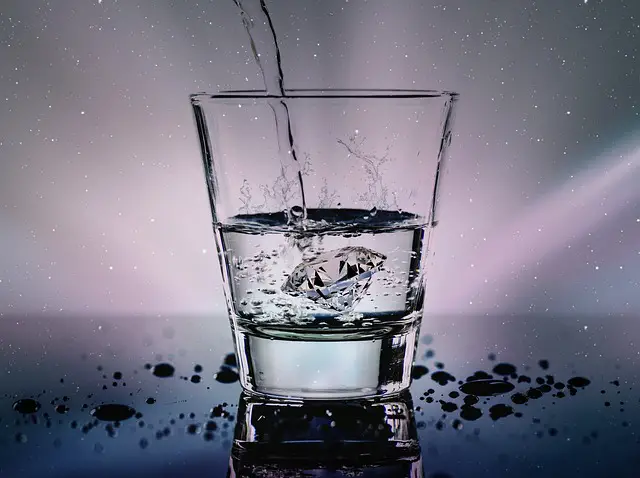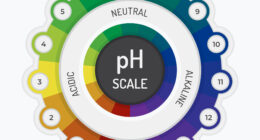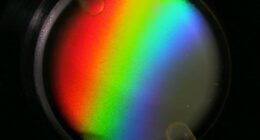Permanent hardness and temporary hardness are two different types of water hardness. The primary difference between the two is that permanent hardness cannot be removed through boiling, while temporary hardness can be easily removed by a simple process of boiling.
What is permanent hardness in water?

Permanent hardness in water is caused by the presence of dissolved sulfate, chloride, and/or nitrate minerals of calcium and magnesium, which cannot be removed by boiling the water. These minerals are typically found in water sources that have come into contact with underground rocks containing gypsum (calcium sulfate), halite (sodium chloride), and/or other mineral salts.
Unlike temporary hardness, which can be reduced or eliminated by boiling the water, permanent hardness requires specialized treatment processes such as ion exchange, reverse osmosis, or distillation to remove the dissolved minerals from the water. These processes involve removing the calcium and magnesium ions from the water and replacing them with other ions, such as sodium or hydrogen ions.
Permanent hardness can cause problems such as soap scum, which is formed when soap reacts with the dissolved minerals in the water, and reduced effectiveness of certain cleaning agents. It can also lead to the formation of scale in pipes, water heaters, and other equipment, which can reduce water flow, increase energy consumption, and damage equipment over time.
What causes temporary hardness in water?
Temporary hardness in water is caused by the presence of dissolved bicarbonate minerals, specifically calcium bicarbonate (Ca(HCO3)2) and magnesium bicarbonate (Mg(HCO3)2). These minerals are formed when water percolates through rocks such as limestone or chalk, which contain calcium and magnesium carbonates.
When water containing dissolved bicarbonate minerals is heated, the bicarbonate ions break down and release carbon dioxide gas, leaving behind calcium and magnesium ions that form solid carbonate deposits. These deposits are commonly known as scale, and can cause problems such as reduced water flow, increased energy consumption, and damage to equipment such as water heaters and boilers.
The formation of temporary hardness can be reduced or eliminated through processes such as boiling, which causes the bicarbonate minerals to precipitate out of the water as solid carbonate deposits. Alternatively, temporary hardness can be removed through processes such as ion exchange, reverse osmosis, or distillation.
The difference between permanent and temporary hardness in water
The main difference between permanent and temporary hardness in water is the types of dissolved minerals that cause the hardness and the methods used to remove them.
Temporary hardness is caused by the presence of dissolved bicarbonate minerals, specifically calcium bicarbonate (Ca(HCO3)2) and magnesium bicarbonate (Mg(HCO3)2). These minerals can be removed by boiling the water, which causes the bicarbonate ions to break down and release carbon dioxide gas, leaving behind solid carbonate deposits that can be easily removed.
Permanent hardness, on the other hand, is caused by the presence of dissolved sulfate, chloride, and/or nitrate minerals of calcium and magnesium, which cannot be removed by boiling the water. These minerals require specialized treatment processes such as ion exchange, reverse osmosis, or distillation to remove the dissolved minerals from the water.
Another difference between permanent and temporary hardness is the effects they have on water quality and equipment. Temporary hardness can cause problems such as the formation of scale in water heaters and boilers, while permanent hardness can cause soap scum and reduce the effectiveness of certain cleaning agents.
The difference between permanent and temporary hardness lies in the types of dissolved minerals causing the hardness and the methods used to remove them.
How to remove hardness in water?
There are several methods to remove hardness in water, depending on the type and severity of the hardness:
Boiling: Boiling water can help to remove temporary hardness by causing the bicarbonate minerals to precipitate out of the water as solid carbonate deposits. However, this method is not effective for permanent hardness.
Chemical treatment: Chemicals such as lime (calcium hydroxide) and soda ash (sodium carbonate) can be added to the water to precipitate the dissolved minerals out of the water. This method is effective for both temporary and permanent hardness, but it can also increase the water’s pH and introduce new chemicals into the water.
Ion exchange: Ion exchange involves passing the water through a resin bed that removes the dissolved minerals responsible for hardness and replaces them with sodium ions. This method is effective for both temporary and permanent hardness and can be used in both residential and commercial applications.
Reverse osmosis: Reverse osmosis uses a semipermeable membrane to remove dissolved minerals from the water. This method is effective for both temporary and permanent hardness but is typically used for residential and small-scale commercial applications.
Distillation: Distillation involves heating the water to create steam, which is then condensed back into water, leaving behind any dissolved minerals and impurities. This method is effective for both temporary and permanent hardness, but it is not practical for large-scale applications due to its high energy requirements.
Removing hardness from water may also remove essential minerals that are beneficial for human health. Therefore, it is important to consult with a water treatment professional to determine the most appropriate method for removing hardness in water while maintaining the water’s overall quality.
How will you differentiate among soft temporary and permanent hard water?
Soft water: Soft water contains very low levels of dissolved minerals, particularly calcium and magnesium ions. Soft water feels smooth and silky to the touch, and produces a good lather with soap. It is less likely to form scale on pipes and appliances, but can be corrosive to some metals and may require additional treatment for human consumption.
Temporary hard water: Temporary hard water contains high levels of dissolved bicarbonate minerals, particularly calcium and magnesium bicarbonate. When heated, the bicarbonate minerals can precipitate out of the water, forming a hard, white scale on surfaces. Temporary hard water feels slippery to the touch, and produces a lather with soap that is easily rinsed off.
Permanent hard water: Permanent hard water contains high levels of dissolved sulfate, chloride, and/or nitrate minerals of calcium and magnesium that cannot be removed by boiling the water. Permanent hard water feels rough and sticky to the touch, and produces a poor lather with soap that is difficult to rinse off. It is more likely to form scale on pipes and appliances, which can lead to reduced water flow and damage over time.
To differentiate among soft, temporary, and permanent hard water, one can conduct a simple soap test. Take a small amount of water in a clear container and add a few drops of liquid soap. If the water produces a rich, frothy lather that is easy to rinse off, it is likely soft water. If the water produces a lather that disappears quickly and leaves behind a scum, it is likely temporary hard water. If the water produces a lather that is difficult to produce and rinse off, it is likely permanent hard water.
What causes permanent hardness in water?
The presence of dissolved minerals in water causes permanent hardness. These minerals, such as calcium and magnesium, cannot be removed by boiling the water. This type of hardness is also referred to as non-volatile or fixed hardness.
What is the main cause of temporary hardness of water?
The main cause of temporary hardness is the presence of dissolved minerals, such as calcium and magnesium. When water with high concentrations of these minerals comes into contact with carbonates, such as limestone or chalk, the minerals can precipitate out of the water, causing the water to become hard. Temporary hardness is often caused by runoff from agricultural land or urban areas, where fertilizers and other chemicals can increase the concentrations of dissolved minerals in water.
Why permanent hardness Cannot be removed by boiling?
Permanent hardness is caused by dissolved minerals, such as calcium and magnesium, which cannot be removed by boiling. These minerals remain in the water when it evaporates, leaving behind a deposit of hard water. Temporary hardness is caused by dissolved bicarbonates, which can be removed by boiling. The bicarbonates become carbon dioxide gas, which escapes from the water, leaving it soft.








